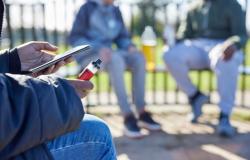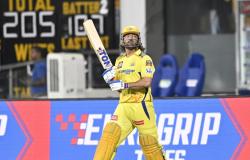STATEN ISLAND, NY — The highly anticipated total solar eclipse is less than two weeks away, and an astronomy organization is warning consumers of counterfeit and fake eclipse glasses that may not protect your eyes while viewing this rare phenomenon.
On Monday, April 8, a rare total solar eclipse will pass over Mexico, the United States and Canada, according to NASA. A total solar eclipse occurs when the moon passes between the sun and Earth, completely blocking the face of the sun. During this time, the sky will darken, as if it were dawn or dusk.
If you’re planning to view the solar eclipse, you’re advised to protect your eyes as viewing the sun during an eclipse can cause severe damage.
Except during the brief total phase of a total solar eclipse — when the moon completely blocks the sun’s bright face — it’s not safe to look directly at the sun without specialized eye protection for solar viewing, NASA stated. Viewing any part of the bright sun through a camera lens, binoculars, or a telescope without a special-purpose solar filter secured over the front of the optics is also unsafe.
But not all glasses are safe to use.
BEWARE OF COUNTERFEITS AND FAKES
The American Astronomical Society (AAS) Solar Eclipse Task Force stated that counterfeit and fake eclipse glasses are now polluting the marketplace. It is critical that people understand how to spot these unsafe products.
Safe solar viewers come in a variety of styles, including eclipse glasses with cardboard or plastic frames and handheld viewers.
Counterfeit solar viewers are those made by one manufacturer but fraudulently printed with the name of a different manufacturer, sometimes with their artwork.
According to the AAS, one or more unidentified factories are producing counterfeit eclipse glasses printed with the name and address of a reputable Chinese factory, Cangnan County Qiwei Craft Co., which is known to manufacture safe products. Some of these look indistinguishable from genuine Qiwei products and appear to be safe, but when you put them on, they are no darker than ordinary sunglasses. Not only are these counterfeit products, but they are also fake — they are sold as eclipse glasses but are not safe for solar viewing.
So how do you know if you bought safe eclipse glasses?
“There’s no way to tell just by looking at them whether eclipse glasses are genuinely safe,” said Rick Fienberg, project manager of the AAS Solar Eclipse Task Force and a veteran of 14 total solar eclipses. “But it’s easy to tell if they are not safe.”
BUYING SAFE GLASSES
The easiest way to ensure safe eclipse glasses is buying directly from a vetted vendor.
Here are three solar eclipse glasses, approved by the AAS, sold on Amazon.
LUNT SOLAR 5 Pack Premium Eclipse Glasses, AAS Approved 2024 Solar Glasses — $14.95
Solar Eclipse Glasses AAS Approved 2024 – Made in the USA CE and ISO Certified Safe Shades for Direct Sun Viewing (2 Pack) — $14.99
Medical king Solar Eclipse Glasses AAS Approved 2024 (10 Pack) CE and ISO Certified Safe Shades for Direct Sun Viewing — $14.99
CHECK SAFETY OF YOUR GLASSES
There are other ways to check your eclipse glasses, according to the AAS.
Before April 8, put the glasses on indoors and look around. You shouldn’t be able to see anything through them, except very bright lights that should still appear very faint through the glasses. If you can see anything else, such as household furnishings or pictures on the wall, your glasses aren’t dark enough for solar viewing.
If they pass the indoor test, take them outside on a sunny day and look around. You still shouldn’t see anything through them, except the sun’s reflection off a shiny surface or puddle. Even then, that should still appear very faint.
If your glasses pass that test, you can then glance at the sun through them for less than a second. You should see a sharp-edged, round disk (the sun’s visible “face”) that’s comfortably bright. Depending on the type of filter in the glasses, the sun may appear white, bluish white, yellow, or orange, according to the AAS.
Should the eclipse glasses pass all three tests, they are probably safe. But if you’re not completely confident, use them sparingly.
“During the April 8th solar eclipse, look at the sun through the glasses for no more than two or three seconds every five minutes or so,” said the AAS. “This will be enough to observe the moon covering more and more of the sun before maximum eclipse, then uncovering more and more of it after maximum eclipse.”
The task force at AAS has compiled a list of vendors of safe solar viewers. If you don’t see a vendor listed, it doesn’t mean their products are unsafe — just that the AAS couldn’t vet them all.






